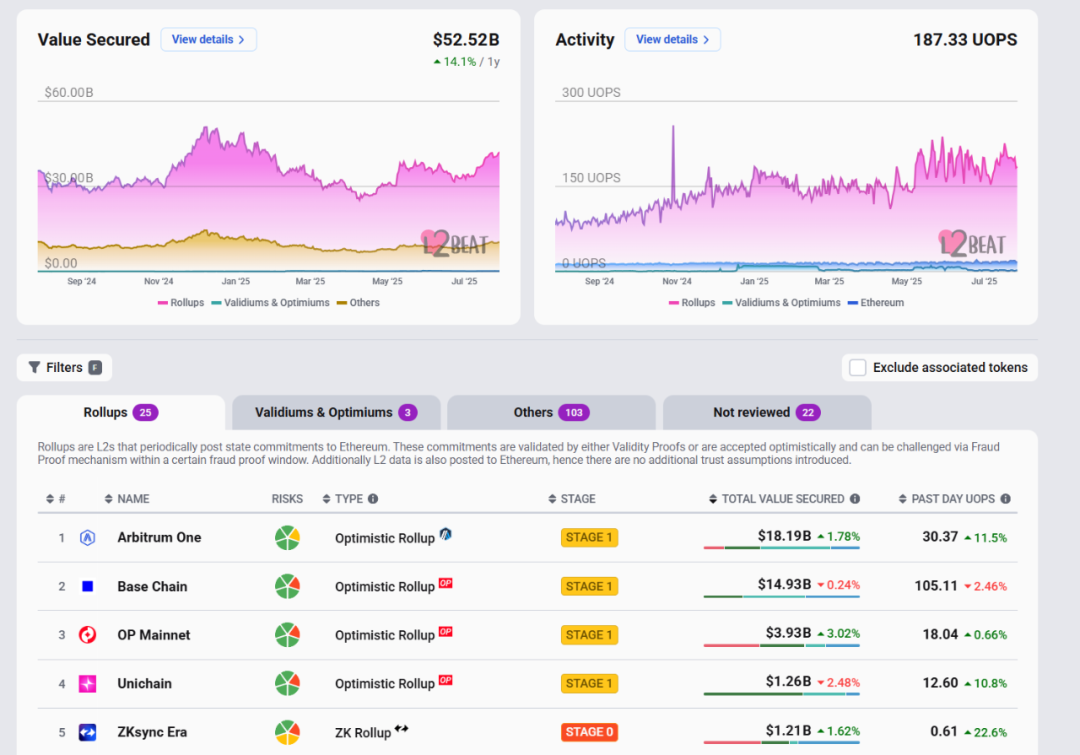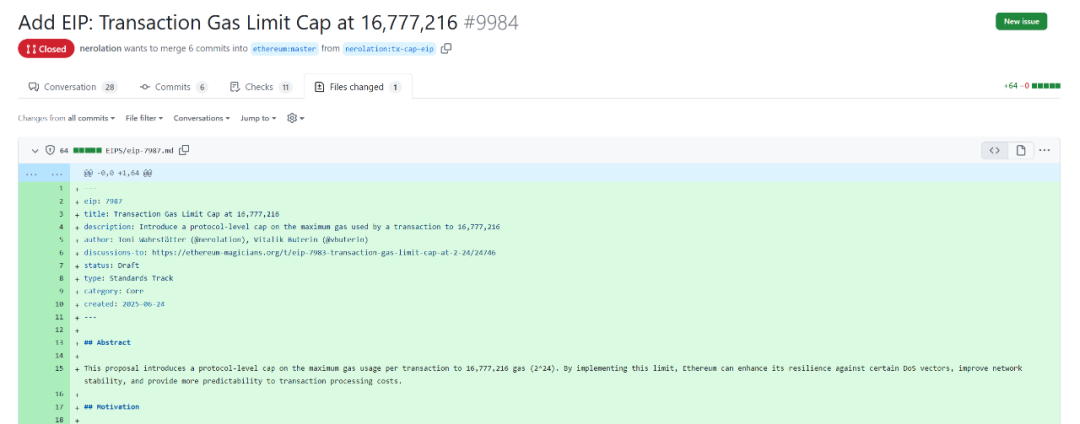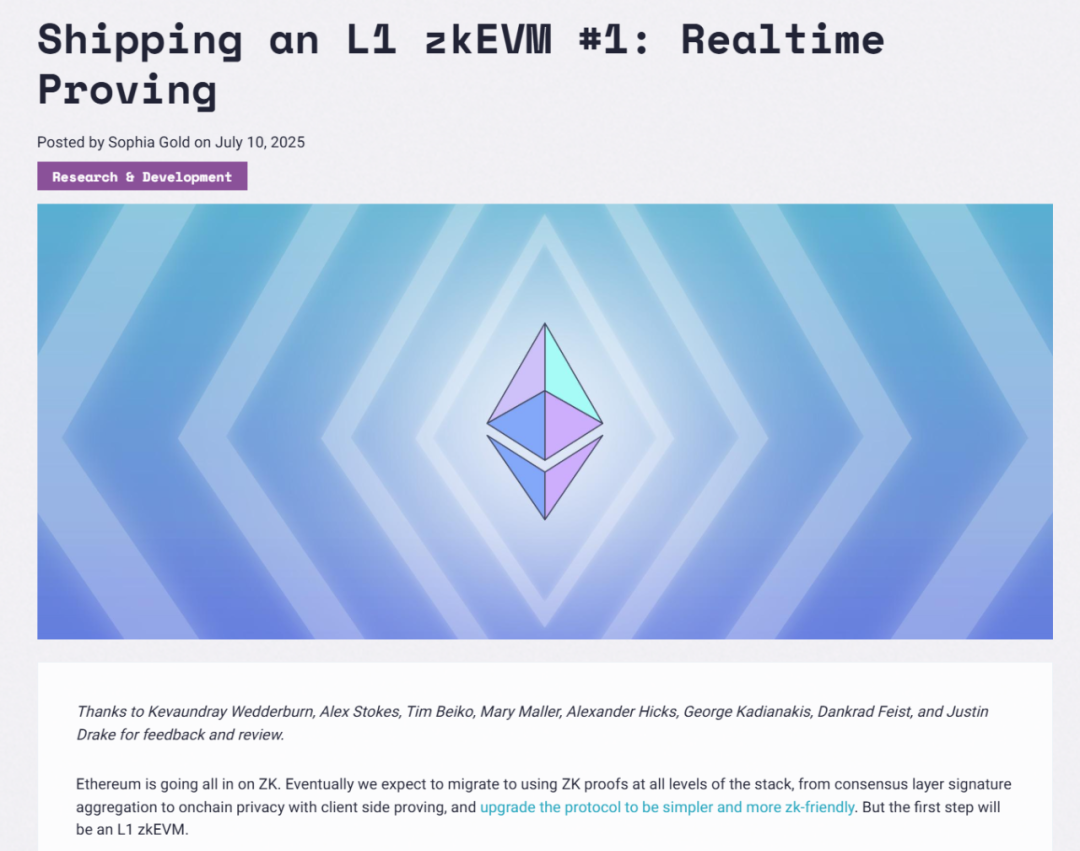What is the most important thing for Ethereum in the next five years?
L1 Scalability.
Starting this month, Vitalik Buterin and the Ethereum Foundation have made significant statements on several core issues: from the EIP-7987 proposal (which was previously referred to as EIP-7983 by the community, officially numbered EIP-7987) attempting to set a cap on gas for single transactions, to the L1 zkEVM officially entering the experimental phase, and the increase in block gas limits, all indicating that Ethereum's L1 scalability is accelerating into a fast lane for implementation.
It can be said that after achieving phased results in the L2 ecosystem, Ethereum has reached a point of refocusing on the scalability path of L1—Rollups are already fast enough, but L1 can still be lighter, stronger, and more unified.
This article attempts to outline the technical context behind this series of updates and briefly discuss how Ethereum's L1 plans to achieve the next round of large-scale expansion.
01. Splitting and Merging: Starting Again from L1
Since Vitalik Buterin published the "Rollup-Centric Roadmap" in 2020, Rollups have become the core strategy for Ethereum's scalability, giving rise to a series of L2 projects like Arbitrum and Optimism, seemingly becoming "the new continent of Ethereum."
However, the problem with Rollups lies here, as mentioned in the article "Understanding ERC-7786: Is the Ethereum Ecosystem Making Great Strides into the 'Unified' Era?": there are currently hundreds of L2s in a broad sense, which not only leads to a fragmentation of transactions and value on L2 but also increases the burden on L1 as the layer for data availability and final settlement.
This inevitably places an increasing operational pressure on L1, for example, high gas transactions (such as blob submissions and zkProof verifications) significantly increase the computational and verification burden on L1 nodes, the state space continues to expand affecting node synchronization efficiency and on-chain storage costs, while the fluctuation in Ethereum block packaging times intensifies, posing security and censorship risks.

Source: L2Beat
Ultimately, the development trajectory of L2 over the past few years can be seen as a "history of building walls"—various Rollups have fenced off their own liquidity moats, striving to lock users and assets within their ecosystems. While these high walls have fostered local efficiency, they have also weakened the overall liquidity and unity of Ethereum as an integrated network.
As the saying goes, "What is united will be divided; what is divided will be united." Ethereum is at a major cyclical turning point, returning from L2 differentiation to L1 reconstruction, which in some ways is a phased correction of the "L2-centric" approach:
Making the overall network experience feel more like a unified ecosystem rather than a platter of dozens of fragmented chains, which means that in the future, asset transfers, state sharing, and application switching across L1/L2 should be as smooth and seamless as on a single chain.
Therefore, from Based Rollup to ePBS and then to L1 zkEVM, the Ethereum Foundation's protocol research team and developer community are systematically promoting a series of structural optimizations at the L1 level, attempting to enhance the mainnet's execution capability, usability, and resilience against external attacks without sacrificing security and decentralization.
02. EIP-7987 & zkEVM: Injecting Scalability Genes into the Mainnet
Currently, the two core scalability reform proposals that are most closely watched in the market are EIP-7987 and L1 zkEVM, representing two key dimensions from resource scheduling optimization to execution layer reconstruction.
1. EIP-7987: Limiting the Gas Cap for Single Transactions to Alleviate Block Resource Congestion
First is the EIP-7987 proposal, which suggests setting the gas cap for single Ethereum transactions at 16.77 million. This was jointly proposed by Vitalik Buterin and Toni Wahrstätter earlier this month, with the core idea being to set a maximum gas cap of 16.77 million for single transactions (note that this cap is not directly related to the total gas limit of each block).
As is well known, in the Ethereum network, each transaction (whether a transfer or a contract interaction) consumes a certain amount of gas, and the gas limit capacity of each Ethereum block is fixed, meaning there are limited slots. This implies that if a single transaction consumes too much gas, it can easily occupy block transaction resources.

Source: Github
For example, certain high-load transactions (such as zkProof verifications or large contract deployments) often consume most of the block space in a single transaction. Therefore, the intention of this proposal is to avoid single high gas operations (such as zkProof verifications or large-scale contract deployments) from crowding out the entire block's resources, causing node verification congestion, especially affecting parallel execution environments and light node synchronization:
By setting a cap, it forces some oversized transactions to be split, thus preventing a single transaction from occupying too many resources, and introducing a restriction during the transaction execution process—if a transaction exceeds this cap before entering the block, it will be rejected during the verification phase.
In addition, adjustments to the gas cap for Ethereum blocks are also underway. On July 21, Vitalik Buterin tweeted that "almost exactly 50% of stakers voted to raise the L1 gas cap to 45 million, and the current gas cap has begun to increase, now at 37.3 million."
Theoretically, expanding the block gas cap will indeed significantly enhance the performance of the Ethereum mainnet. However, Ethereum has been relatively cautious about this in the context of the significant development of L2 and other routes—looking back at the expansion of Ethereum's gas limit, it was only increased from 8 million to 10 million in September 2019, and it took until this year for the gas limit to rise from 8 million to 36 million over six years.
This year, the Ethereum ecosystem has shown a noticeably "more aggressive" public attitude towards discussing the gas limit. The EIP-9698 proposal even suggests "increasing it tenfold every two years," raising the gas limit to 3.6 billion by 2029, which is a hundred times the current limit.

Source: Etherscan
This series of adjustments reflects Ethereum's realistic considerations regarding the pressure on mainnet scalability and lays the computational resource foundation for the upcoming zkEVM execution layer upgrade.
2. L1 zkEVM: Zero-Knowledge Proofs for Reconstructing the Execution Architecture of the Mainnet
zkEVM has long been regarded as one of the "endgames" for scaling Ethereum, with the core design idea being to enable the Ethereum mainnet to support ZK circuit verification, allowing each block's execution to generate verifiable zero-knowledge proofs that can be quickly confirmed by other nodes.
Specific advantages include that nodes do not need to replay each transaction; they only need to verify the zkProof to confirm the validity of the block, effectively reducing the burden on full nodes, enhancing friendliness towards light nodes and cross-chain validators, and improving security boundaries and resistance to tampering.
Currently, the concept of L1 zkEVM is also accelerating towards implementation. On the 10th of this month, the Ethereum Foundation released the L1 zkEVM real-time proof standard as the first step in its comprehensive adoption of zero-knowledge proof technology, gradually transitioning the Ethereum mainnet to an execution environment that supports zkEVM verification mechanisms.
According to its publicly disclosed roadmap, Ethereum L1 zkEVM is set to launch within a year, using the simplicity of zk-proof to securely scale Ethereum and gradually integrating the ZK proof mechanism into various layers of the Ethereum protocol. For Ethereum, this is also a concentrated practical test of its years of related technological reserves and implementation.
This means that the Ethereum mainnet will no longer just be a settlement layer but will become a self-verifying execution platform—what is referred to as a "verifiable world computer."

Overall, if EIP-7987 enhances execution efficiency at a micro level, L1 zkEVM achieves a qualitative change at a macro architectural level. It is expected to bring a 10 to 100 times improvement in execution performance while reconstructing the "value capture capability" of the Ethereum mainnet.
Transitioning from merely being a settlement layer to becoming a verifiable execution engine, L1 itself will take on more roles as a connection point for users, assets, and liquidity, and will be better equipped to face competition from high-performance new public chains like Solana and Monad.
Of course, in addition to transaction processing and execution architecture itself, Ethereum is also making comprehensive innovations in broader resource management and governance mechanisms.
03. Other Combinations for L1 Scalability
Beyond EIP-7987 and zkEVM, Ethereum's scalability upgrades at the mainnet layer are making comprehensive efforts from multiple underlying modules, gradually building a high-performance, low-threshold, and fair on-chain execution environment.
For example, the Ethereum Foundation is promoting an architecture optimization called ePBS, which aims to completely separate the roles of block proposers and block builders, systematically addressing issues such as MEV extraction imbalance and construction power monopolies, thereby enhancing the fairness, censorship resistance, and transparency of block production from a mechanistic perspective.
More importantly, ePBS is undergoing deep integration with another key component, FOCIL—the core goal of FOCIL is to allow light nodes to verify blocks and transaction execution results without needing to maintain a complete state online. Combined with ePBS, the future proposal, construction, and verification processes of Ethereum will form a clear "separation of powers" architecture, significantly enhancing the protocol's flexibility.
At the same time, this combination also provides more possibilities for scenarios such as privacy transactions, light nodes, and mobile wallets, lowering the participation threshold. This signifies that Ethereum is gradually moving towards a "modular consensus architecture," bringing stronger composability and institutional flexibility to decentralized systems.
Another underestimated but highly valuable long-term scalability path is the Stateless Ethereum architecture. The core idea is to completely reduce the nodes' reliance on the "full chain state" by introducing a witness mechanism, allowing nodes to only download and verify data related to the current transaction, significantly lowering synchronization and verification costs.
To this end, the Ethereum Foundation is promoting a visualization tool called bloatnet.info, which quantifies and displays the uneven burden that state bloat brings to the network, providing a foundational support for future state cleanup, streamlining mechanisms, and state leasing models.
In addition, the Ethereum research team has previously focused on the Beam proposal, which sets independent pricing curves for different resource types such as computation, storage, and calls. The goal is to introduce a more refined resource pricing mechanism to Ethereum, aiming to transform Ethereum from a "one-dimensional billing system" to a "multi-dimensional resource market," similar to the resource scheduling systems in traditional cloud computing.
04. Conclusion
To be pragmatic, in an era where Rollup scalability has become mainstream and account abstraction is increasingly popular, many may place all their hopes for scalability on the L2 model of "off-chain execution + mainnet settlement."
However, the reality is that the evolution of L1 has never stopped and is irreplaceable.
L2 can accommodate more users and release execution space, while L1 provides unified settlement, security anchors, and resource governance foundations. Only through the collaborative evolution of both can a truly sustainable, high-performance, globally applicable Web3 value network be built.
In the future, Ethereum can only move towards a truly unified world computer by achieving the collaborative evolution of L1 and L2.
免责声明:本文章仅代表作者个人观点,不代表本平台的立场和观点。本文章仅供信息分享,不构成对任何人的任何投资建议。用户与作者之间的任何争议,与本平台无关。如网页中刊载的文章或图片涉及侵权,请提供相关的权利证明和身份证明发送邮件到support@aicoin.com,本平台相关工作人员将会进行核查。




